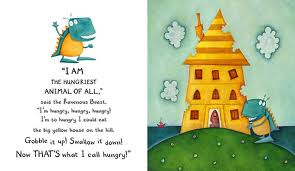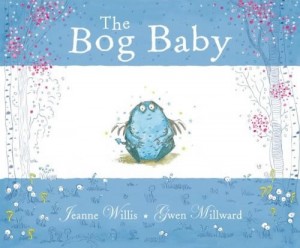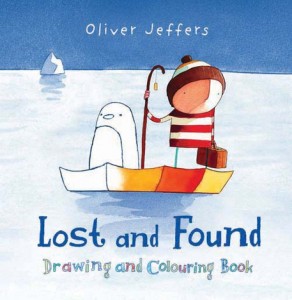 I really love Jan Fearnley’s picture books as she is able to write really well and use her illustrations to add layers with. One of my current favourites is Harry and the Jaggedy Daggers by Jan Fearnley. I used it recently to help Year 2 pupils feel secure with their past tense use of verbs and appropriate use of adjectives.They really enjoyed making the concertina books focusing on descriptive language of the Jaggedy Daggers. They chatted away about the best verbs to use for the waves and rocks!
I really love Jan Fearnley’s picture books as she is able to write really well and use her illustrations to add layers with. One of my current favourites is Harry and the Jaggedy Daggers by Jan Fearnley. I used it recently to help Year 2 pupils feel secure with their past tense use of verbs and appropriate use of adjectives.They really enjoyed making the concertina books focusing on descriptive language of the Jaggedy Daggers. They chatted away about the best verbs to use for the waves and rocks!The Jaggedy Daggers!
Trying to use exciting adjectives and verbs to bring the story to life!
I then used props to rewrite the end of the story where Harry has to try to save the songbird’s eggs from the cruel rocks.
Our own Harry scooping up the eggs!
I was really pleased with their writing (although my writing frame wasn’t the most inspirational one you’ve ever seen!) We had talked about how to start our sentences in exciting ways to bring the scene to life and I think Abdul really tried hard to do that:
I have also found a lovely picture book called ‘Dear Panda’ by Miriam Latimer all about a little girl called Florence who is lonely after moving house, until she spots a panda in the zoo next door.
Every day she waves at him and he waves back, so she decides to write him a letter! I always trying to find texts with different registers and this is great, as there are a number of simple letters from the school, Flo and Panda. I taught the children how to structure a letter after looking at the letter from Goldilocks to Baby Bear from ‘The Jolly Postman’ by Allan and Janet Ahlberg:
We looked at the reason that Goldilocks wrote the letter and how she used drawings to make the letter really personal:
My Year 2s then had a go at writing in role as Flo asking the Panda to become friends. The children loved the characters and were really keen to write their own letters:
The Ravenous Beast – Niamh Sharkey – I have only just picked this book up, but I love it. Structurally, it is a cumulative story with animals trying to out-do each other with how ravenous they are. It is gently eccentric with each animal having its own turn of phrase. I am going to be using it for reinforcing commas in a list with the Year 2 children I work with.

 Bog Baby’ by Jeanne Willis and Gwen Millward.
Bog Baby’ by Jeanne Willis and Gwen Millward.
This is a wonderful picture book about two curious girls who find a tiny bog baby in the local pond and take it home to look after. Unfortunately even though they try hard to care for it the little creature soon starts to pine and needs to return to his own home. I have used the book in lots of schools as it has so much beautiful language and detailed illustrations. Pupils have produced fact files and even created their own book babies to look after. They love writing instructions about how to care for their new friends.
I really love all the writing of Oliver Jeffers and particularly enjoy ‘Lost and Found’. It is the story of a boy who finds a penguin on his doorstep and who tries to help him find his way home, because he thinks the poor creature is lost. I have used four different versions of the book – the original, the colouring-in book and the pop-up version:

I have used these in both Year 1 and Year 2 and have brought them to life through drama with children going into role as both of the characters. Last week, I worked with more able Year 1 pupils on creating a found poster. We discussed how it should be set out after looking at a variety of different posters.
We discussed using a question to start off our poster, as this would grab people’s attention as they walked past. I then modelled this and used an’ if so’ sentence, explaining that if they had lost a penguin then we needed to tell them we had found one. We chatted about the details that should come next and decided that we should describe what the penguin looked like, how he moved and what he liked to eat. We then discussed why we needed to end the poster with what to do next and why we might used words like ‘straight away’ or immediately.

I was keen to encourage the pupils to put the modelled ideas into their own structure and use conjunctions, such as because and but to extend the details in this poster.

In the past Year 2 pupils have used this text to explore character’s emotions and write in role as the boy and the penguin at the most powerful part of the story, when they realise that they need each other:

The group of Year 2 pupils I work with every week are now doing a Space topic, so I am using that wonderful text ‘Man on the moon’ by Simon Bartram:

During the first week, I wanted to develop the pupils descriptive skills, as I was now working with the more able pupils and want them to move towards level ‘threeness’ in their writing. The story centres around Bob who travels up to the Moon every day to keep it neat and tidy, as well as entertain tourists. I decided to ask the pupils to imagine that they had the amazing opportunity to actually fly to the Moon to meet Bob and spend the day with him. We acted out each part of our day and then discussed how you could tell people about this amazing day-out by sending their family or friends a postcard full of exactly what they had done and seen. We decided to only include the most exciting parts of the day!



We looked at postcards and then I shared one that I had written that captured this ‘grand day out!’
 They really enjoyed making the postcard really exciting, but some of them were limited with the use of different time connectives and emotional language, so I decided to give them an image from the text to help them develop this aspect of their writing further:
They really enjoyed making the postcard really exciting, but some of them were limited with the use of different time connectives and emotional language, so I decided to give them an image from the text to help them develop this aspect of their writing further:

First of all we created noun phrases to label the pictures with and then discussed the order that the sentences would be in to describe this part of the story and I modelled the first few sentences:

The pupils then wrote their own:

















